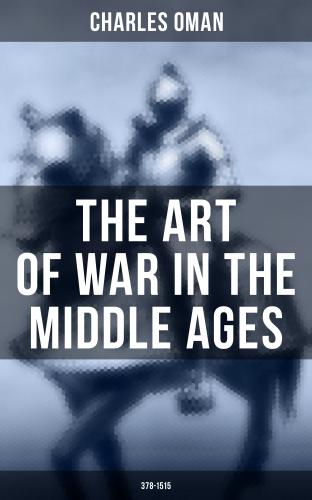The battle of Hastings, the first great mediæval fight of which we have an account clear enough to give us an insight into the causes of its result, was the final trial of this form of military efficiency. Backed by the disorderly masses of the fyrd, and by the thegns of the home counties, the house-carles of King Harold stood in arms to defend the entrenchments of Senlac. Formidable as was the English array, it was opposed precisely by those arms which, in the hands of an able general, were competent to master it. The Norman knights, if unsupported by their light infantry, might have surged for ever around the impregnable palisades. The archers, if unsupported by the knights, could easily have been driven off the field by a general charge. United, however, by the skilful tactics of William, the two divisions of the invading army won the day. The Saxon mass was subjected to exactly the same trial which befell the British squares in the battle of Waterloo25: incessant charges by a gallant cavalry were alternated with a destructive fire of missiles. Nothing can be more maddening than such an ordeal to the infantry soldier, rooted to the spot by the necessities of his formation. After repelling charge after charge with the greatest steadiness, the axemen could no longer bear the rain of arrows. When at last the horsemen drew back in apparent disorder, a great part of Harold’s troops stormed down into the valley after them, determined to finish the battle by an advance which should not allow the enemy time to rally. This mistake was fatal: the Norman retreat had been the result of the Duke’s orders, not of a wish to leave the field. The cavalry turned, rode down the scattered mass which had pursued them, and broke into the gap in the English line which had been made by the inconsiderate charge. Desperate as was their position, the English still held out: the arrows fell thickly among them, the knights were forcing their way among the disordered ranks of the broken army, but for three hours longer the fight went on. This exhibition of courage only served to increase the number of the slain: the day was hopelessly lost, and, as evening fell, the few survivors of the English army were glad to be able to make their retreat under cover of the darkness. The tactics of the phalanx of axemen had been decisively beaten by William’s combination of archers and cavalry.
Once more only--on a field far away from its native land--did the weapon of the Anglo-Danes dispute the victory with the lance and bow. Fifteen years after Harold’s defeat another body of English axemen--some of them may well have fought at Senlac--were advancing against the army of a Norman prince. They were the Varangian guard--the famous Πελεκυφóροι --of the Emperor Alexius Comnenus26. That prince was engaged in an attempt to raise the siege of Dyrrhachium, then invested by Robert Guiscard. The Norman army was already drawn up in front of its lines, while the troops of Alexius were only slowly arriving on the field. Among the foremost of his corps were the Varangians, whom his care had provided with horses, in order that they might get to the front quickly and execute a turning movement. This they accomplished; but when they approached the enemy they were carried away by their eagerness to begin the fray. Without waiting for the main attack of the Greek army to be developed, the axemen sent their horses to the rear, and advanced in a solid column against the Norman flank. Rushing upon the division commanded by Count Amaury of Bari, they drove it, horse and foot, into the sea. Their success, however, had disordered their ranks, and the Norman prince was enabled, since Alexius’ main body was still far distant, to turn all his forces against them. A vigorous cavalry charge cut off the greater part of the English; the remainder collected on a little mound by the sea-shore, surmounted by a deserted chapel. Here they were surrounded by the Normans, and a scene much like Senlac, but on a smaller scale, was enacted. After the horsemen and the archers had destroyed the majority of the Varangians, the remainder held out obstinately within the chapel. Sending for fascines and timber from his camp, Robert heaped them round the building and set fire to the mass27. The English sallied out to be slain one by one, or perished in the flames: not a man escaped; the whole corps suffered destruction, as a consequence of their misplaced eagerness to open the fight. Such was the fate of the last attempt made by infantry to face the feudal array of the eleventh century. No similar experiment was now to be made for more than two hundred years: the supremacy of cavalry was finally established.
Конец ознакомительного фрагмента.
Текст предоставлен ООО «ЛитРес».
Прочитайте эту книгу целиком, купив полную легальную версию на ЛитРес.
Безопасно оплатить книгу можно банковской картой Visa, MasterCard, Maestro, со счета мобильного телефона, с платежного терминала, в салоне МТС или Связной, через PayPal, WebMoney, Яндекс.Деньги, QIWI Кошелек, бонусными картами или другим удобным Вам способом.
